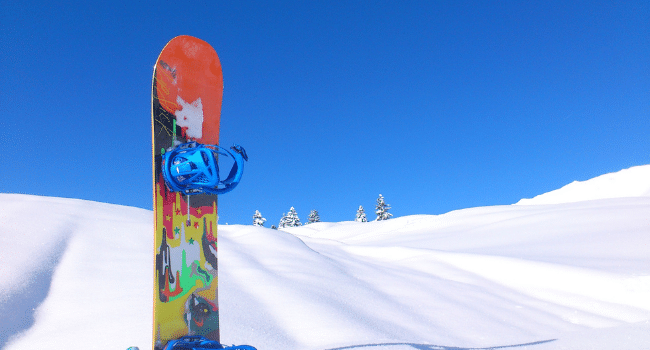Table of Contents
One of the coolest sports in the world is snowboarding. Sliding down a frozen mountain on a wheel-less skateboard is daunting indeed. But it is increasing in popularity. In the United States of America, snowboarding is a popular winter sport, with 7.56 snowboarders in 2017. After all, snowboarding is beneficial for health. It is similar to aerobic exercise and can help you burn calories. It can increase your endurance and aid you in weight loss. It also improves your overall flexibility and allows you to concentrate. Various types of snowboards can cater to different environments and individual riding styles. It is important for you to know the right type for enjoyable downhill rides. So, get to know all about the different types below. But before that, you can learn about the various parts of a snowboard.
What are the parts of a snowboard?
When you familiarise yourself with the snowboard parts, you will easily understand how to utilise them. Here are some of the parts mentioned below.
- Nose: The nose is the snowboard’s front side and where you are facing.
- Tail: As the name suggests, the tail is the back of the snowboard or where your weak foot is placed.
- Bindings: Bindings are parts where the boot is attached. Due to the disc base plates, the angle of the boots can be altered.
- Ankle straps and toe caps: Ankle straps and toe caps allow you to secure the boots to the binding.
- Edge: Edges allow the snowboard from digging the snow.
- Shape: You will find various types of shapes. The side of your board is cut in different shapes and allows Swiffer carving in the snow.
- Profile: You will find a few major profile variations. A profile is the way the board lays on the snow.
If you’re in need of new gear, check out the best skateboards shops in town for a wide selection and expert advice.
What are the types of snowboards?
With many types of snowboards, searching for one becomes easier. Listed below are a few types.
1. All-mountain snowboard: If you want to learn snowboarding, the professionals will definitely hand you the all-mountain snowboard. It is designed to take on different types of surfaces. You can use it on a powder surface, lump, bumps and piste. In addition to this, you can also use it on pipe courses and parks. It is a versatile type of snowboard and doesn’t require a lot of getting used to mastering. This snowboard has a narrow tail compared to the tip, which allows it to be well-balanced towards the tail. Well, you can use it in the opposite direction. Since it is well-balanced, the performance is more than average on any mountain. You can improve your mastery of various terrains by utilising the all-mountain snowboard alone.
2. Freestyle snowboard: If you are an experienced rider, you can pick the freestyle snowboard. Due to its particular design, it is geared to performing tricks. You can find riders performing tricks like flips and turns on various competition games. Each brand has a different freestyle board design. Some comprise the directional twin tips. More features of this snowboard allow the rider to have a playful approach. This snowboard can help increase control since it is lightweight and short. But remember that it is not designed for terrain and courses. Generally, the freestyle snowboards are made from poplar wood since they provide flexibility and durability.
3. Powder snowboard: Powder snowboard is a unique snowboard design that is designed for riding powder snow. Due to the shape of the tail and nose of the board, you can ensure that the rider will float better on snow. You might find this snowboard with a longer tail and wider nose most often. In order to keep the snowboarder from falling, the binding by the tail must be closer to the edge. Many manufacturers have collaborated with various surfboard shapers to manage the challenges and obstacles of the untouched powder snow by creating better designs. With the powder snowboard’s unique hybrid design and cut-outs, you can ensure that the riders stand out.
Read More on KulFiy
Ski Goggles – A Must for Every Skiing Enthusiast
How to Use LED Christmas Lights for the Other 11 Months of the Year
How to Use LED Christmas Lights for the Other 11 Months of the Year
How to Use LED Christmas Lights for the Other 11 Months of the Year
